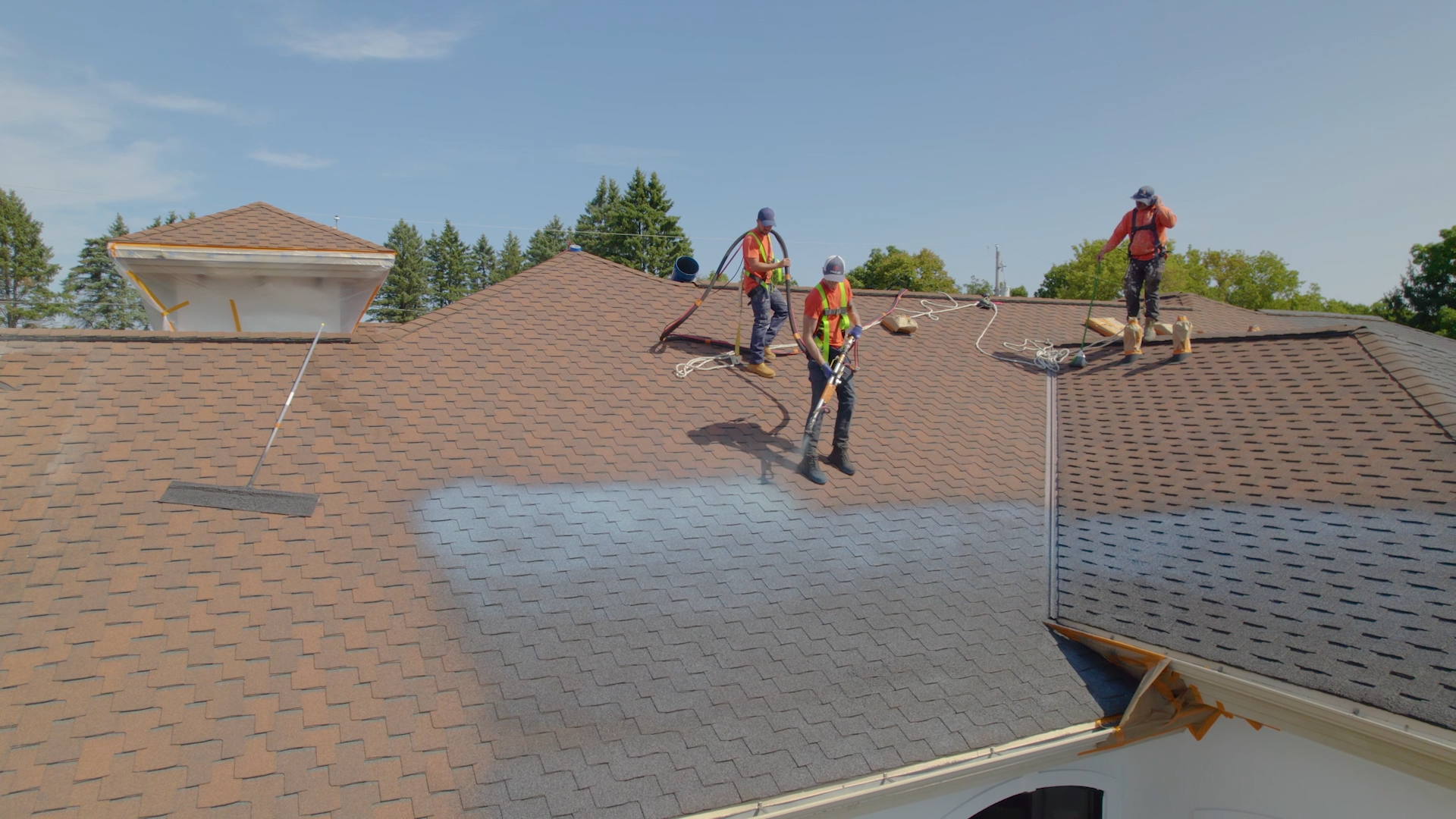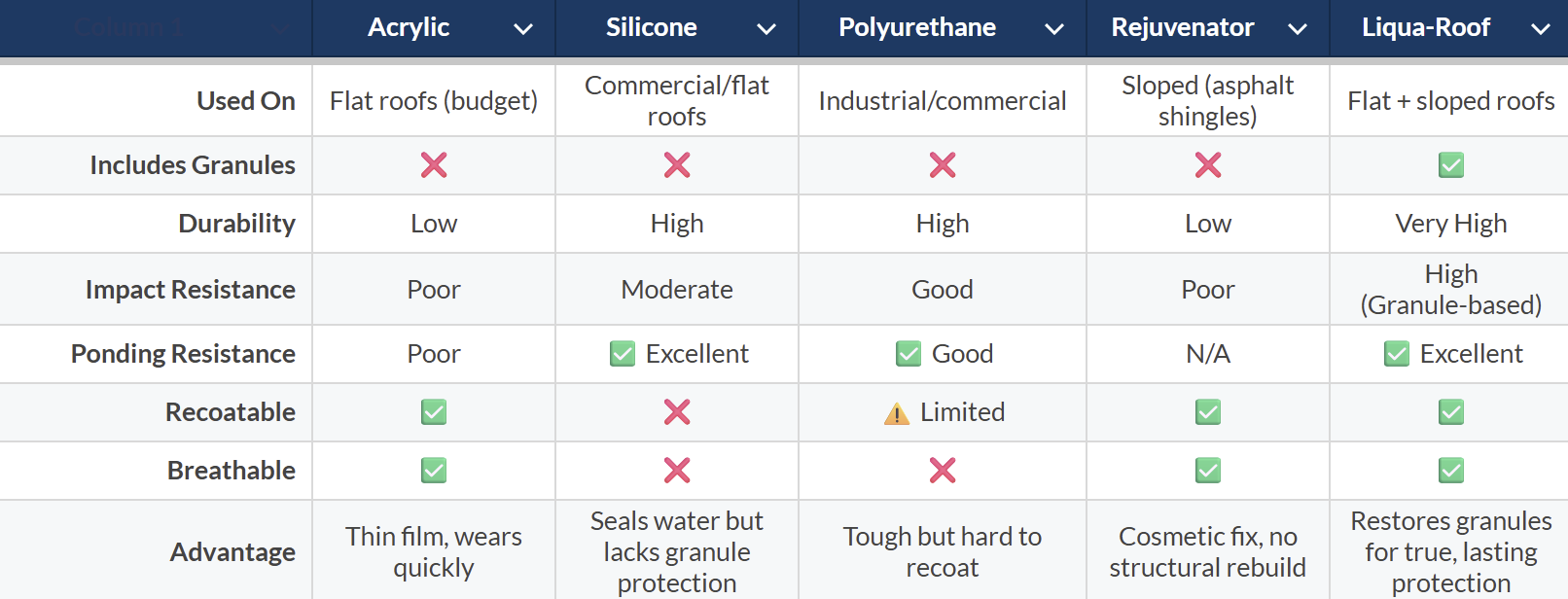.svg)

How to Choose the Best Roof Coating: Understanding the basics of roof coatings.
Navigating the world of roof coatings can feel like wading through a sea of buzzwords and bold claims. With so many options out there—acrylics, elastomerics, silicones, bio-oils, nano this, nano that—it can get confusing to understand what the best option for you is. It's tempting to think they’re all just variations of the same thing: a quick fix to seal your roof and maybe keep it cooler. But are they really delivering the protection your roof needs, or is it all just slick marketing? At Liqua-Roof, we hear one question all the time: “Is this like Liqua-Roof?” The short answer? Not really.
Now this isn’t to say that all roof coatings are “not good”. Not all roof coatings are created equal, and each serves a purpose depending on your budget, roof type, and goals.
Liqua-Roof isn’t just another coating though, it’s a full resurfacing system designed to restore what truly makes a roof durable; its granules. Let’s break down why that matters and how to choose the right solution for your roof.
The Main Categories of Roof Coatings
Most roof coatings fall into a few common categories, each with its own strengths and shortcomings. Here’s a quick rundown:
Other options, like polyurethanes or bitumen-based coatings,often come with their own headaches: tricky applications, brittleness overtime, or lackluster aesthetics and very high price tags. These coatings mightalso buy you some time, but they’re not rebuilding what your roof has lost.
Why Granules Are the Key to Roof Protection
Every new shingle or commercial membrane comes with a layer of granules for a reason. These tiny, rugged particles are your roof’s first line of defense, providing:
Over time, granules wear away, leaving your roof vulnerable.When that protective armor is gone, cracks, leaks, and UV damage start creeping in. Most coatings? They just slap a shiny layer over the problem, leaving your roof exposed to the elements without restoring its core strength. And aesthetically, it looks like a patch.
Liqua-Roof: Rebuilding, Not Just Coating
Liqua-Roof doesn’t just cover up the problem—it rebuilds what your roof is missing. Our system brings granules back to the equation,delivering protection that’s as close to a new roof as you can get without the cost, mess, or hassle of a full replacement. Here’s how it works:
For Sloped Roofs (Asphalt Shingles):
For Flat Roofs (Commercial or Residential):
Why Liqua-Roof Wins:
How Liqua-Roof Stacks Up
Here’s a side-by-side look at how Liqua-Roof compares to other coatings:

The Bottom Line
When you’re searching for a roof coating that lasts and doesn’t just look like a layer of paint, Liqua-Roof is in a category of it's own. It’s not just a coating — it’s a complete resurfacing system that restores the granular protection your roof was designed with. It delivers the look and performance of a new roof without the hefty cost, mess, or disruption of a full replacement—and in some cases, it may even outperform a brand-new roof.Granules are what set it apart. That’s why Liqua-Roof doesn’t just coat — it rebuilds, protects, and endures, all while maintaining the authentic, granular aesthetic of a freshly installed roof. And, true to its name, while it applies as quickly as a coating, Liqua-Roof is far more… it’s a true liquid roof.
Fill out the form below and a member of our team will be in touch to schedule your free assessment.